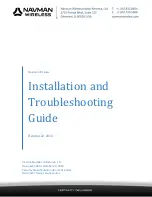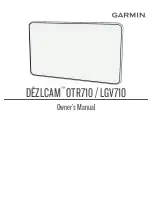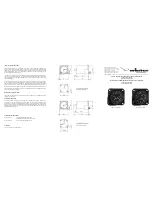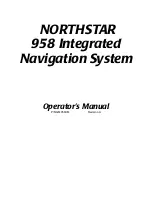
your position is our focus
antenna
supervisor
use
the
UBX-CFG-ANT
message.
For
further
information
refer
to
pervisor
configuration,
the
status
of
the
antenna
supervisor
will
be
reported
in
a
NMEA
($GPTXT)
or
UBX
(INF-NOTICE)
message
at
start-up
and
on
every
change.
Note
To
activate
the
®
the
ANTARIS 4 Protocol Specifications [9].
Similar
to
the
antenna
su
Message
Description
ANTSTATUS=DONTKNOW
Active
antenna
supervisor
is
not
configured
and
deactivated.
ANTSTATUS=OK
Active
antenna
connected
and
powered
ANTSTATUS=SHORT
Antenna
short
ANTSTATUS=OPEN
Antenna
not
connected
or
antenna
defective
T
Antenna Supervisor M
p (NMEA protocol)
Note
The
open
circuit
super
t
may
be
reduced
with
an
circuitry,
which
fulfils
the
same
function
as
the
u-blox
suggested
4.4 Serial Communication
The
ANTARIS 4
GPS
Technology
comes
with
a
highly
flexible
communication
interface.
It
supports
both
the
and
a
several
ports
with
individual
settings
(e.g.
baud
rate,
messages
enabled,
etc.)
for
each
port.
It
is
even
possible
to
assign
more
than
one
protocol
(e.g.
UBX
protocol
and
NMEA)
to
a
single
te
a
protocol
(UBX,
NMEA,
RTCM)
on
a
port
and
UBX
-
CFG
(Config)
–
MSG
(Message)
to
activate
a
specific
message
on
a
serial
port
and
define
the
output
rate
(see
ANTARIS
®
4
GPS Protocol Specifications [9])
.
Every
protocol
can
be
activated
on
several
ports
if
required.
4.4.1 USART
Ports
All
TIM-4x,
LEA-4S
and
LEA-4A
receivers
feature
two
u
able 21: Active
essage on startu
visor
circuitry
has
a
quiescent
current
of
approximately
2mA.
This
curren
advanced
circuitry.
®
NMEA
the
proprietary
UBX
protocol
and
is
able
to
accept
differential
correction
data
(RTCM).
It
is
truly
multi-port nd
multi-protocol
capable.
Each
protocol
(UBX,
NMEA,
RTCM,
custom
protocol)
can
be
assigned
to
at
the
same
time
(multi-port
capability)
port
(multi-protocol
capability),
which
is
particularly
useful
for
debugging
purposes.
Use
the
UBX
proprietary
messages
UBX
–
CFG
(Config)
–
PRT
(Port)
to
activa
niversal
synchronous/asynchronous
receiver/transmitters
(USART)
ports
(
RxD1
/
TxD1
and
RxD2
/
TxD2
)
that
can
be
used
to
transmit
GPS
measurements,
monitor
status
information
and
configure
the
receiver.
All
LEA-4P,
LEA-4H
and
LEA-4T
receiver
feature
one
USART
and
one
USB
Using
the
following
functions
of
the
serial
port
requires
the
ANTARIS
®
4 Software Customization Kit:
K0
SCK1
and
SCK2
as
synchronous
serial
clocks.
•
SPI
Interface
All
serial
interface
signals
(Port1:
TxD1
,
RxD1
;
Port2:
TxD2
,
RxD2
)
operate
on
3V
CMOS
signal
levels.
External
line
transceivers
are
necessary
to
provide
RS
232
compatible
signal
levels.
The
serial
ports
consist
of
a
RX-
and
a
TX
line.
No
handshaking-
or
hardware
flow
control
signals
are
available.
These
serial
ports
operate
in
asynchronous
mode.
Supported
Baud
Rates
are:
serial
port.
•
Synchronous
serial
interfacing
using
the
additional
pins
SC
GPS
Modules
-
System
Integration
Manual
(SIM)
(incl.
Reference
Design)
Receiver
Description
GPS.G4-MS4-05007-A1
Page 79
















































